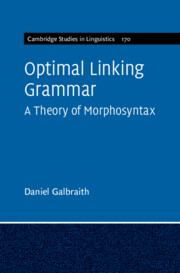10 - Conclusion
Published online by Cambridge University Press: 20 April 2023
Summary
The conclusion presents a recap of the findings in terms of the OLG theory and new data from Faroese, Icelandic and other languages. Several suggestions are made as to how the OLG framework could be tested against new data, especially regarding pertinent questions raised by the analyses of quirky case phenomena. First, dative–accusative case frames beyond Faroese are discussed: pain-related verbs in Baltic languages occur in both dative–nominative and dative–accusative patterns, for which Seržant (2013) explicitly draws parallels with Icelandic and Faroese. Likewise, the loss of oblique subjects over time is discussed in Indo-Aryan languages: Deo and Sharma (2006) and Kiparsky (2017) identify the important factors in changes in these case systems. The trajectory seems to be similar to that of Old Norse moving via Icelandic- and Faroese-type to modern Norwegian-type systems with respect to the oblique subjects. A possessive construction in Uralic languages is also discussed, in which the oblique possessor occurs with a nominative or accusative possessum. Finally, some proposals are made for future research based on the framework itself, with reference to information structure, stochastic and other variants of Optimality Theory, locality constraints, and other topics.
Keywords
- Type
- Chapter
- Information
- Optimal Linking GrammarA Theory of Morphosyntax, pp. 255 - 266Publisher: Cambridge University PressPrint publication year: 2023



